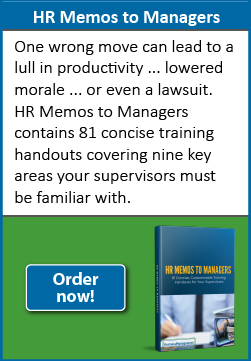Avoid these big legal mistakes when reopening

In a still-confusing time, you want to get people back to work, and keep them there. But Dan Kaplan,a partner at Foley & Lardner’s Madison, Wisconsin office and a leader on the firm’s Coronavirus Task Force, has some reminders for us of the organizational and legal issues we cannot look past.
Make sure you’re not making these mistakes as the population of your office begins to increase:
Mistake #1: Failing to designate reopening leaders. A long, confusing list of safety protocols and office adjustments can’t just be posted and forgotten; there need to be people ultimately responsible for making sure things get done properly, and enforced when there are guaranteed stumbles.
With reopening must come a bit of staff policing—who’s going to step up and be the heavy hand in the first stages? How will you know your guidance on cleaning tasks, office re-spacing and interaction management will be followed unless individuals take possession of those duties? Kaplan recommends visualizing your reopening Task Force in terms of these roles:
- Team Lead: Ensures the reopening plan is being executed.
- Logistics Coordinator: Oversees and directs employees & third-party arrivals/departures including visitor sign-in.
- Structural Inspector: Updates and maintains the safety measures of the physical building and its offices.
- Disinfection and Materials Supervisor: Monitors the disinfection of common areas and ensures proper supplies are always available.
- Task Force Liaison: Solicits feedback for implementation of the plan.
- Training Administrator: Reviews updates to regulatory guidance and proposes updates to the plan.
“Look at your reopening plan as a living document,” Kaplan cautions. The coronavirus has shown that it has no regard for rules and procedures that are set in stone. You’ll need a contingency plan in case the office needs to be shut down once again as guidance from health officials changes.
Mistake #2: Making individualized health assessments. Yes, it’s possible to go too far out of your way to keep vulnerable workers from getting sick. You don’t have the right to preclude older workers from coming into the workplace, for example, or those who have relatives at home who might be at risk. Forcing accommodations on staff members is, as always, not permitted. It must be an interactive process.
Making medical inquiries that violate the ADA is a common mistake during this time. “Employers may take steps to determine if employees entering the workplace have COVID-19 because an individual with the virus will pose a direct threat to the health of others,” says the EEOC. But note how specific this sentence is; do not stray from its limitations.
Similarly, the process of checking of temperatures in the office must be conducted without crossing legal boundaries. “You have to understand what the ADA and OSHA say about temperature-checking,” Kaplan says. “It’s OK under EEOC guidance to take someone’s temperature as a threshold for allowing them into the workplace. You cross the line, however, when you start inquiring about the potential sources of that temperature.”
Remember, too, that there are FLSA considerations with the temperature-taking process. Some current cases suggest this is compensable time, but some do not. While making sure the testing is accurate and thorough—and conducted by someone trained and physically protected—keep its duration for individual employees short and avoid delays via staggered schedules.
Mistake #3: Allowing someone back to work without a disclosure or notice of what they can expect. Fearing future lawsuits, some employers have tried to come up with releases that absolve them if an employee contracts the coronavirus while on the job. But “you cannot typically get an enforceable release or waiver from an employee about the coronavirus, so don’t try,” Kaplan says. Instead, you should inform workers of the steps you’re taking to keep them safe but advise them that there are no guarantees in a pandemic. Make your plan accessible online and open it for discussion.
Other issues to keep in mind as you move forward with reopening:
Ask yourself: Is it necessary? Many businesses naturally want to follow their state’s reopening schedule, but the purpose of those particular timetables—designed to get the economy moving again on a large scale—may not align with those of your organization’s own needs. Take a hard look at the quantifiable results of your telecommuting system so far. If something’s not broken, there should be no rush to fix it.
Visualize work differently. From staggering schedules, to pre-recording meetings, to opening up office windows which have been shut since the dawn of time, entertain creative ways to keep your workers safe. Business as usual is gone for a while; use this opportunity to break your traditional notions of how your organization must function.






